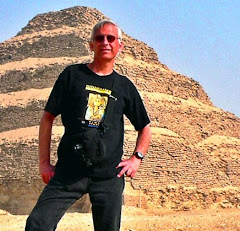That’s the question Baby Boomers ask themselves whenever they see or hear your advertising or marketing communications. They may not put it in those exact words, but you can be sure that if your message doesn’t have the power of a Big Idea behind it, you’re fighting a losing battle.
Fortunately, if your brainstorming was successful, then you’ve got a Big Idea that dramatizes what your brand is all about. That Big Idea promises to pave the way to the Boomer Buying Center, so you can’t let it just lay there. Your next challenge is to communicate it in a way that’s so creative and intriguing that it grabs Boomers’ attention, and resonates so meaningfully that it motivates them to listen, to act and to buy.
If you think I’m overemphasizing the importance of a Big Idea, consider its power. Skeptics have often asked me, “What’s a Big Idea worth?” Although I abhor cigarettes, I cite the example of Marlboro® Country. That was a Big Idea that created so much cash flow that it helped build Philip Morris® into a multinational behemoth.
How does an idea like a cowboy smoking a cigarette, something that’s totally foreign to the lives of the average smoker, move so many of them to buy Marlboros? Who knows? But it remains a smashing success story, and it still attracts countless consumers despite the fact that the industry as a whole kills hundreds of thousands of its very best customers every year. Year after year. Amazing. But that’s the power of a Big Idea.
Most Big Ideas are a lot more consumer friendly. Take the Maytag® Loneliest Man in Town. Wikipedia claims that my father Vincent R. Vassolo created this advertising icon in 1967 when he worked on the account at Leo Burnett. As I recall, though, Ol’ Lonely was born before then. (And, a note to Wikipedia: My father wasn’t a copywriter when he conceived the idea, he was a VP, creative director.)
In any event, Ol’ Lonely really helped put Maytag on the map, and led the brand to the top of its category, where it reigned for decades. It eventually toppled from the pinnacle around the time somebody decided this memorable communication icon just wasn’t effective enough to sell the brand any longer, at least not by using the print stories and TV mini-dramas that emphasized the brand’s dependability so memorably.
Go to the Maytag website, and you’ll find that they still talk about dependability, and the Loneliest Man is still kickin’ around somewhere, but he’s not front and center, as he was in the days when the brand dominated the category. In my opinion, they’ve diluted their Big Idea to the point where it’s lost its power.
Years ago, when consumers asked “What’s The Big Idea about Maytag?,” they remembered the message of the Loneliest Man In Town, and recalled that the brand stood for rock solid dependability. Now that message is diluted and diffuse, and Maytag seems like just another appliance manufacturer. Who knows, maybe some day the guy trying to sell the brand at retail will be the Loneliest Man In Town.
On a more positive note, once you’ve created your Big Idea, you’ve got to be very wise in the way you use it and care for it as the years pass. Do right by it, and your Big Idea will become top of mind with Boomers, and that’s sure to increase profitable sales. More about what to do with your Big Idea tomorrow.



1 comment:
Cool blog. I dig your site outline and I plan on
returning again! I just love finding blogs like this
when I have the time.
Post a Comment